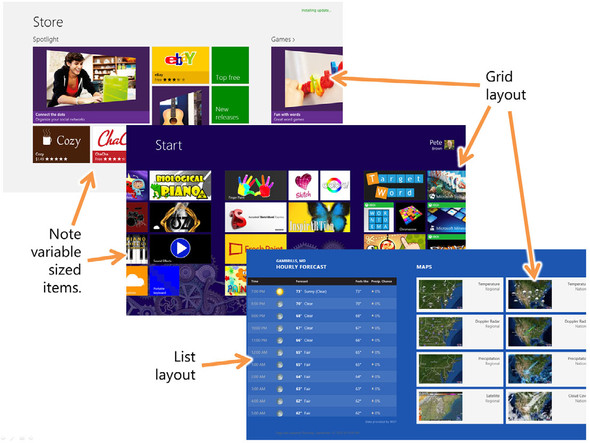Chapter 10. View controls, Semantic Zoom, and navigation
This chapter covers
- The ListView, GridView, and FlipView controls
- Grouping data for display
- Page navigation
- Semantic Zoom
In previous chapters, you’ve learned how important grid layout is to the UI for Windows 8 apps. This applies not only to things the designer places on screen at design time, like buttons and captions, but also to dynamically loaded content.
After you log into a Windows 8 machine, the first thing you see on screen is a grid of tiles: the Start page. This page uses an implementation of the GridView control, as well as Semantic Zoom (pinch the display to see that in action) to assist in organizing and grouping the tiles for apps installed on the PC. Look at other apps on the system; with the exceptions of games and highly specialized UIs (like painting and music creation), chances are you’ll see items arranged in grids or lists in most of the apps. Figure 10.1 shows just a few examples of list and grid layouts within the default apps and the start page.
